7 Ways to Use Blocks to Open Your Hips
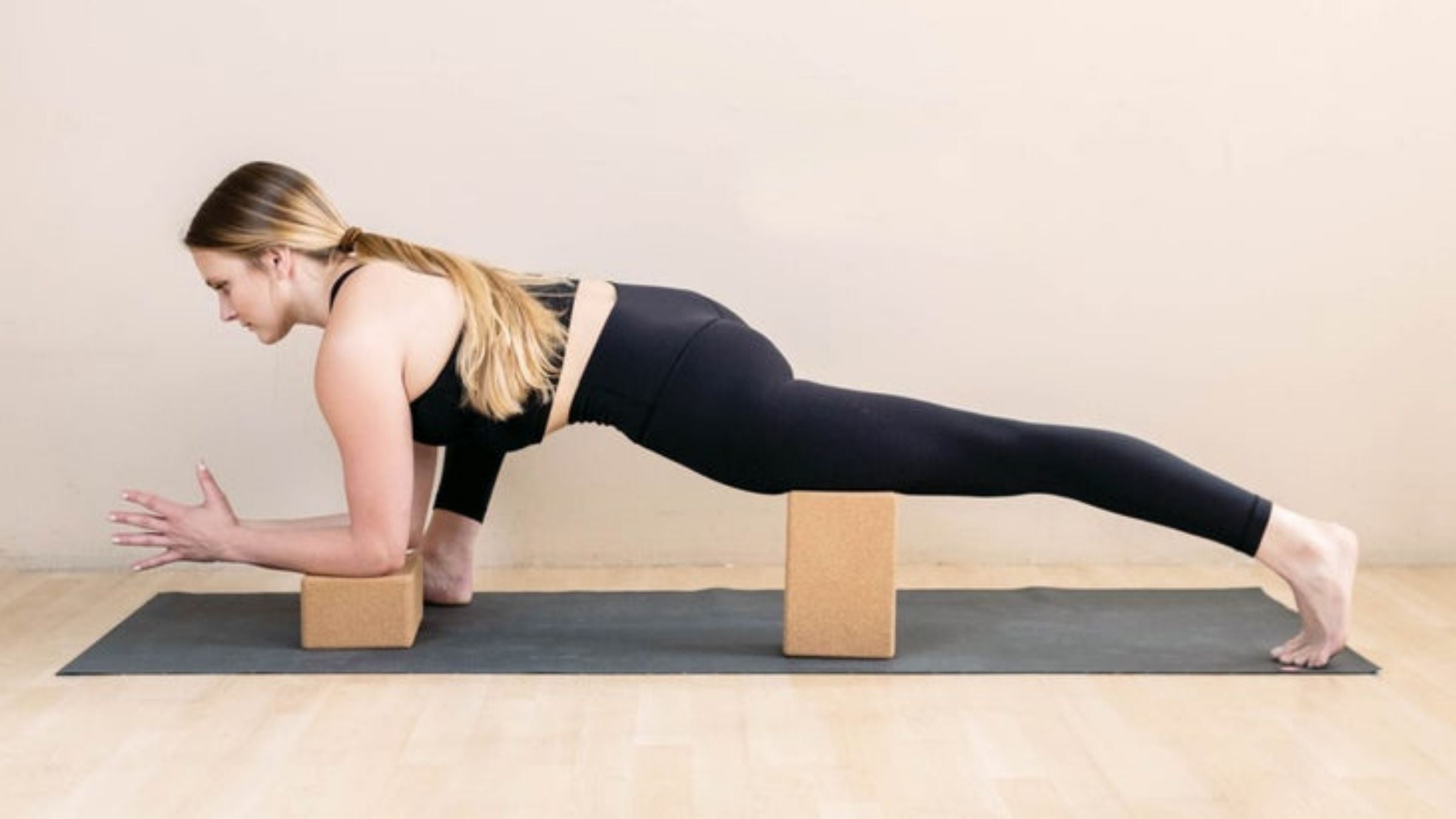
Have you ever been in a yoga class, moving and grooving and feeling fine, when you settle into a deep hip opener and all of a sudden find yourself crying? I have. No matter how many times a yoga teacher tells you, “We store a lot of emotion in our hips,” it can still be a bewildering experience when your feelings release with seemingly no warning.
It turns out that there may be a biological explanation for these mysterious releases. According to research by the late neuropharmacologist Candace Pert, when you experience a feeling, peptides that act as neurotransmitters carry the emotional messages from your brain to cells in your organs, tissues, and muscles—including those in your hips. The cells in these areas contain peptide receptors that can access and store emotional data. Pert hypothesized that this is why deep memories and emotions can get stowed away in your hips, shoulders, and other body parts. “I think unexpressed emotions are literally lodged in the body,” Pert wrote in her research.
The good news: Moving, stretching, or working your hips can potentially release these stored emotions.
When those moments of physical and emotional release come, feeling supported is key. That’s where yoga blocks can offer assistance. The props provide physical feedback to help you align, strengthen, lengthen, or modify a pose, which helps you avoid injury. Using blocks can also help guide your hips in all directions to reduce arthritis pain and inflammation by stretching certain points of the hip joint capsule while pushing synovial fluid to others. In some poses, blocks can help you stretch your piriformis muscle in your outer thigh more deeply, which can soothe the aches that come from sciatica.
The support isn’t just physical: Blocks can also support you in releasing whatever emotional gunk may be gumming up your hip gears. For this practice, you’ll need two blocks. As you flow through it, remember that all of these poses have the potential to unlock the powerful potential of your hips.
RELATED: 8 Yoga-Based Stretches to Relieve Tight Tri Hips
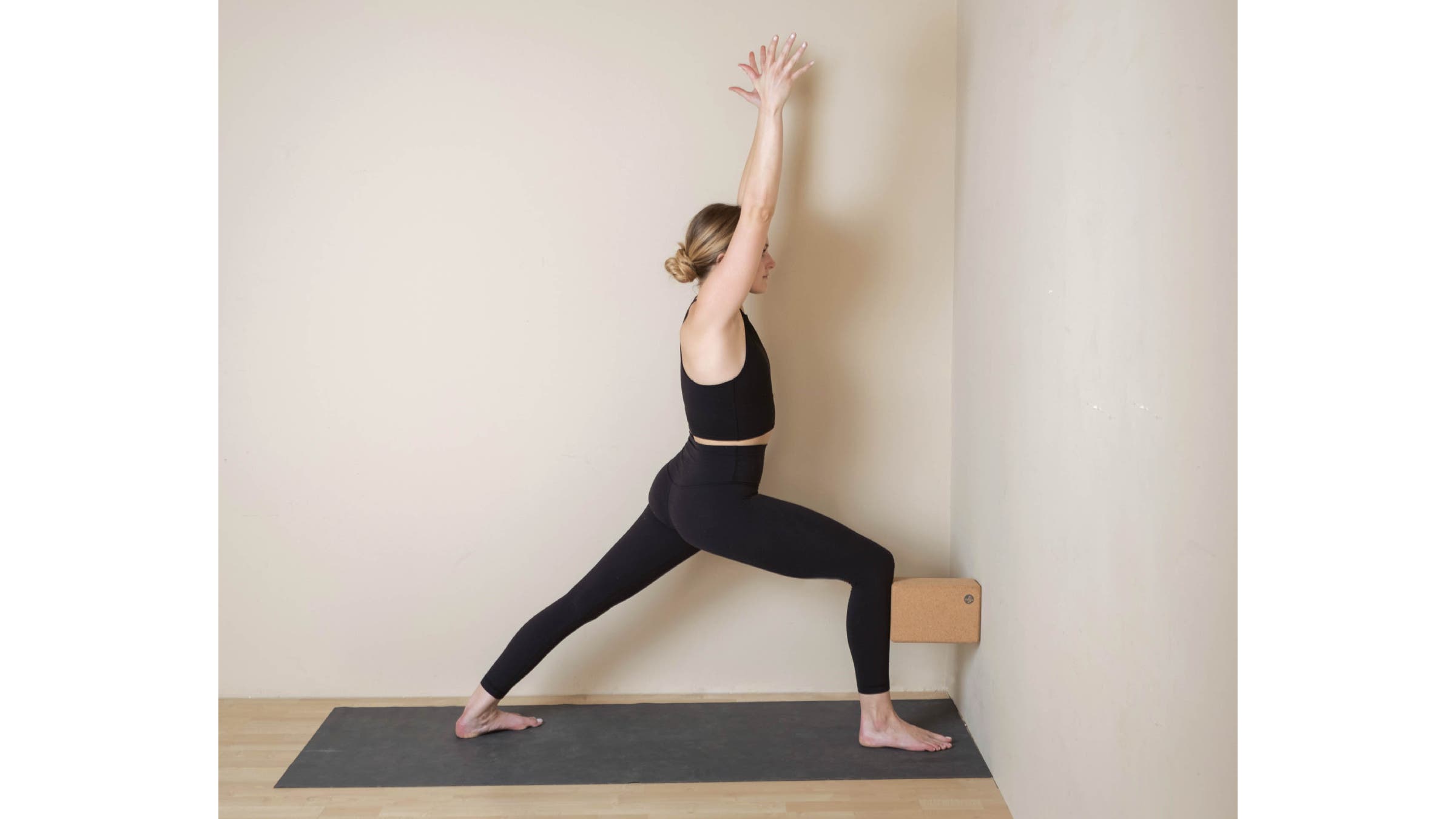
Virabhadrasana I (Warrior Pose I)
Start in Adho Mukha Svanasana (Downward-Facing Dog Pose) with your hands about 6 inches from a wall. Step your right foot between your hands. Spin your back heel down so that your foot is at a 45-degree angle. Lift your torso. Place a block lengthwise between the top of your front shin and the wall. To secure the block, draw your inner thigh forward while pulling your outer thigh and hip backward. Reach up with your arms, softening your shoulders. Hold for 5–10 breaths, then step into Tadasana (Mountain Pose). Repeat on the other side.
RELATED: Your Lower Leg Injuries Could Be Starting at Your Hips
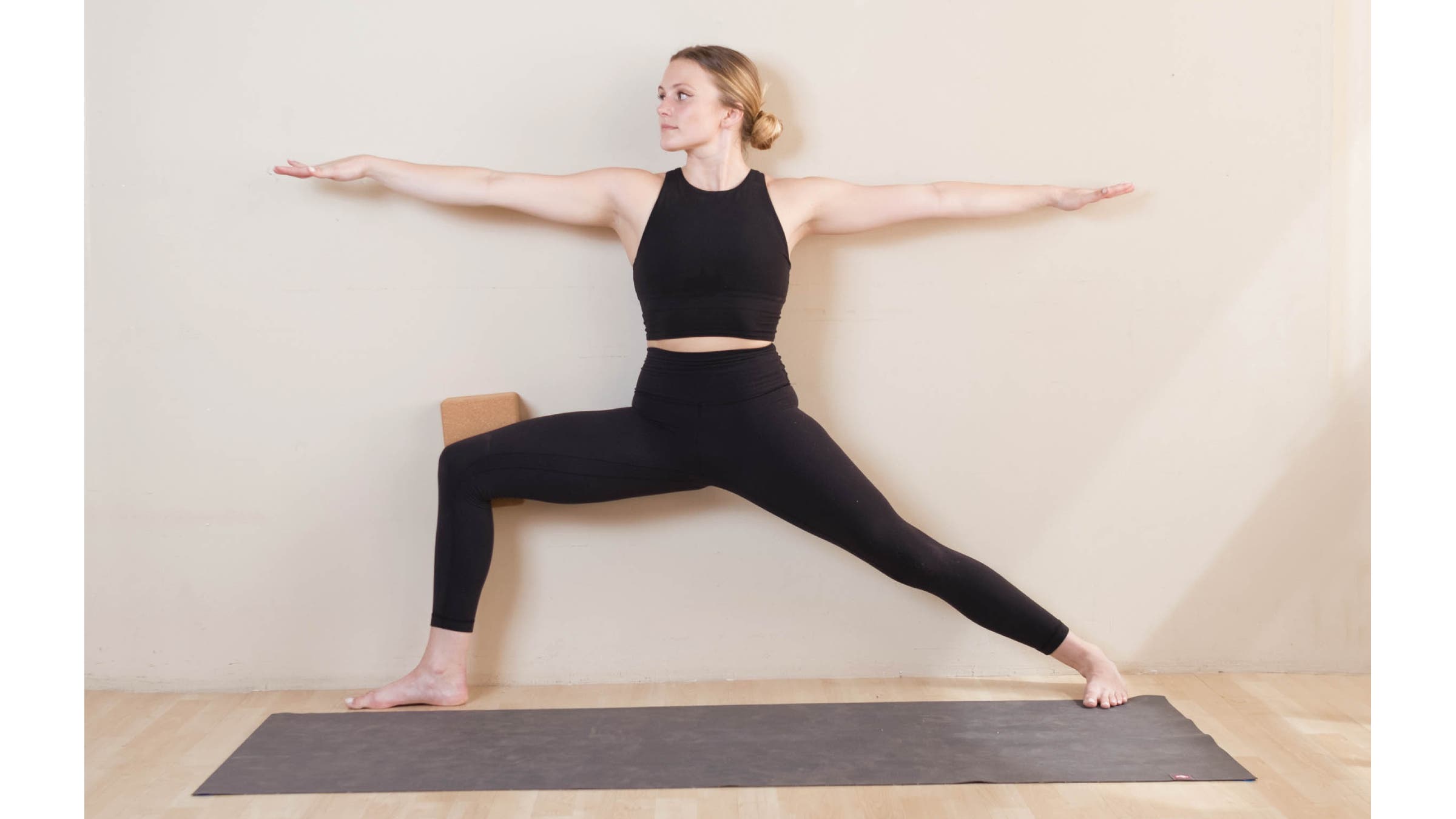
Virabhadrasana II (Warrior Pose II)
Stand in Mountain Pose with your back about 6 inches from a wall. Turn your right toes toward the front of your mat as you step your left foot back and place it either perpendicular to the wall or at a 45-degree angle. Bend your right knee, stacking it over your ankle. Place a block between the outside of your knee and the wall. Press your knee into the block and draw your thigh bone into your hip socket. Extend your arms out to the sides at shoulder height, reaching through your fingers. Hold for 5–10 breaths. Repeat on the other side.
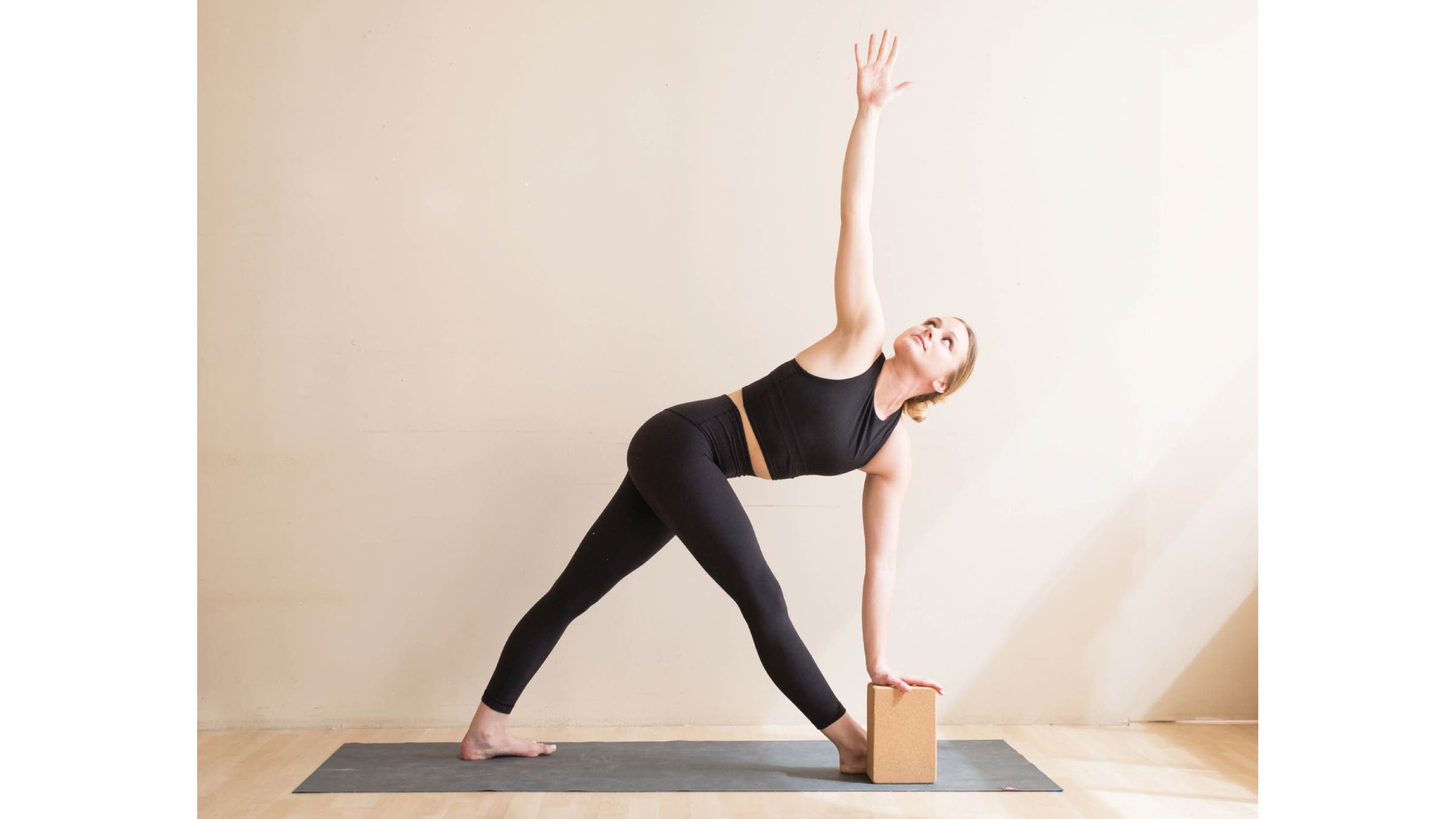
Parivrtta Trikonasana (Revolved Triangle Pose)
Start in Mountain Pose at the back of your mat. Step your right foot forward. Turn your left toes out slightly. Straighten both legs. Place a block on the outside edge of your right foot. Rotate your torso to the right and place your left hand on the block. Rest your right hand on your hip or extend your arm skyward, aligning your right shoulder and left wrist. Hug your inner thighs toward each other; feel a stretch along your outer hips. Hold for 5–10 breaths. To exit, bring your right hand down, lift your torso, and step back to Mountain Pose. Repeat on the other side.
RELATED: This Mobility Circuit Will Keep Your Hips Healthy and Moving Well

Utthan Pristhasana (Lizard Pose)
From Mountain Pose, step your right leg forward. Bend your knee at a 90-degree angle. Place your hands on the mat, framing your right foot. Lower your hips. Place a block under your left thigh. The block creates a deeper hip opening because it lifts your back knee away from the floor. Deepen the stretch by lowering your forearms onto a block or on the mat, with the option for another block under your forehead. Hold for 5–10 breaths. To exit, step your left foot forward to meet the right. Roll up to Mountain Pose. Repeat on the other side.

Upavistha Konasana (Wide-Angle Seated Forward Bend), Variation
Sit tall in a wide-legged straddle. Place a block on its long edge inside of your right ankle. Frame your right leg with your hands and twist your torso so that it slightly hovers over your right thigh. (The deeper you fold your torso, the more challenging this move will be.) Lift your right leg up and over the block and then back to its starting position. Moving slowly and with control, do 5-10 repetitions, then repeat on the other side. This exercise strengthens the psoas muscle and lower abdominals, and increases hip-joint mobility.
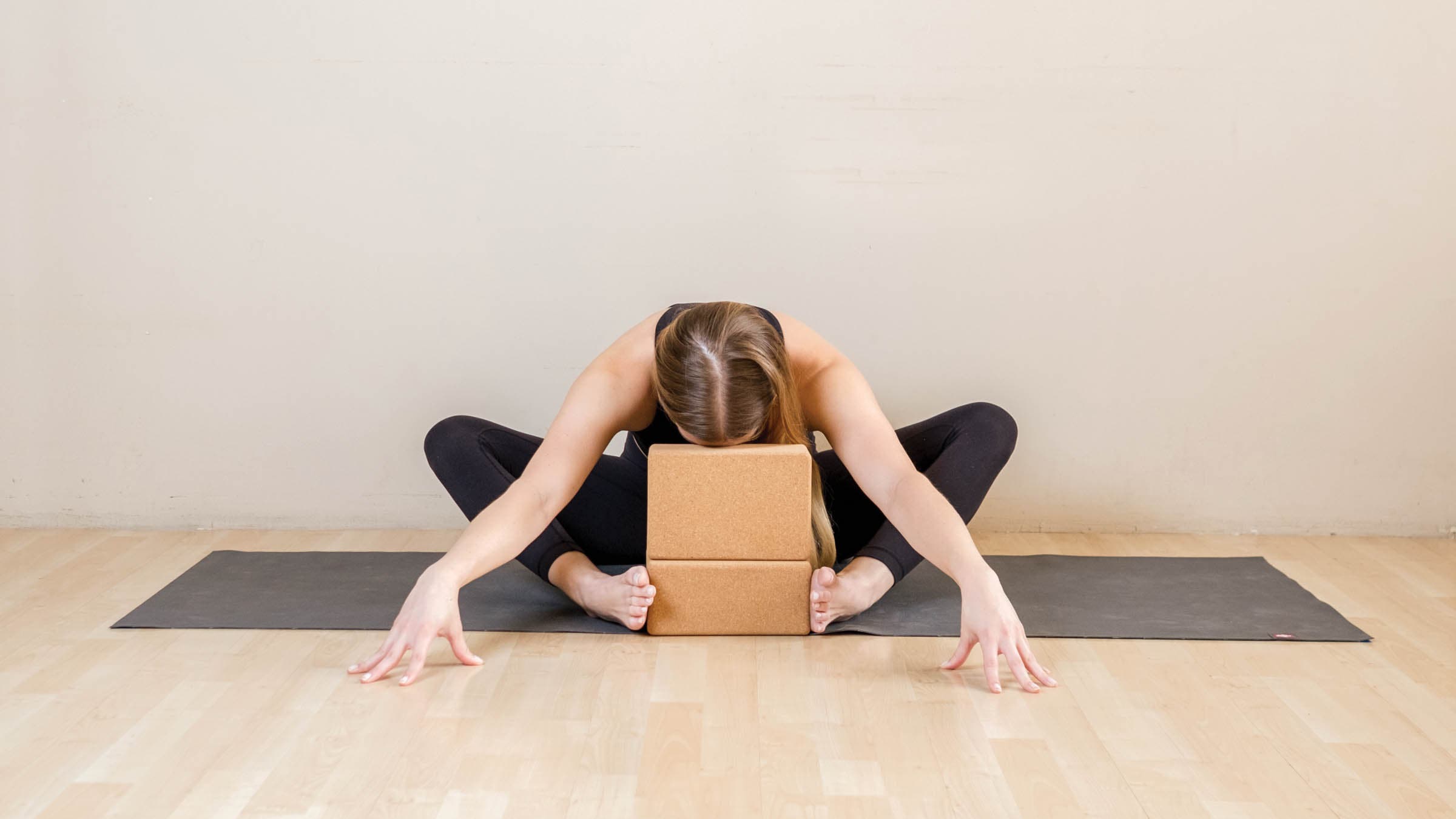
Baddha Konasana (Bound Angle Pose)
Sit with the soles of your feet together and your knees open wide. Draw your heels toward your pelvis. Separate your feet and place blocks at any height or width between your soles. Fold forward, releasing your head and neck toward the blocks. Reach forward and place your fingertips on the ground. Press your feet into the blocks to activate your hips and inner thighs. You can stack more blocks under your head or thighs for more support. Hold for 5–10 breaths.

Ankle-to-Knee Pose
Sit tall with your legs crossed in Sukhasana (Easy Pose). Bring your bottom shin forward until it is parallel with the edge of the mat. Stack the knee of your top leg directly over your bottom ankle. If your knee doesn’t rest on your ankle, place a block between the two to bridge the gap. If your knees feel uncomfortable, place a block in front of your bottom knee and rest your top foot on it. This allows for a deep hip, outer thigh, hamstring, and groin stretch without putting added stress on your knees. Option: fold forward for a deeper hip and hamstring stretch. Hold for 5–10 breaths. Repeat on the other side.